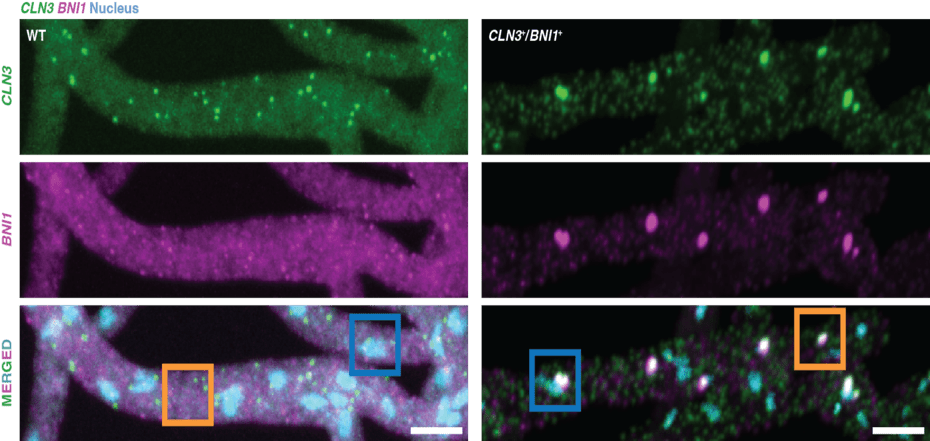
Biomolecular condensates transport RNA molecules inside of cells for functions such as cell signaling and regulating cell processes, but little is known about how they form distinct compositional identities, similar to how oil and water stay separated.
Rohit V. Pappu, PhD, the Gene K. Beare Distinguished Professor of biomedical engineering in the McKelvey School of Engineering at Washington University in St. Louis, in collaboration with Amy S. Gladfelter, professor of cell biology and of biomedical engineering at Duke University, and their labs have found that the order that different RNA molecules are added to the condensates determines how they will be composed, providing new information on how these important cellular compartments are formed. Pappu also is director of the Center for Biomolecular Condensates in the McKelvey School of Engineering, and Gladfelter is a member of the center’s Scientific Advisory Committee.
The team made the discovery using a protein from Ashbya gossypii, a fungus with long filaments that is closely related to yeast. Using live cells, they found that a lack of dynamical control, achieved by synchronizing the production of RNA molecules, resulted in a loss of compositional identity of condensates, which impacted the ability of the fungi to form long, healthy cells with well-defined branches. These branches allow cells to optimize growth in specific areas, so cells can explore and extract resources from the environment, and they are made possible by the ability to package RNA molecules and localize to sites where they are needed, Pappu said.
Their study was published in Nature Communications.
Read more on the McKelvey School of Engineering website.